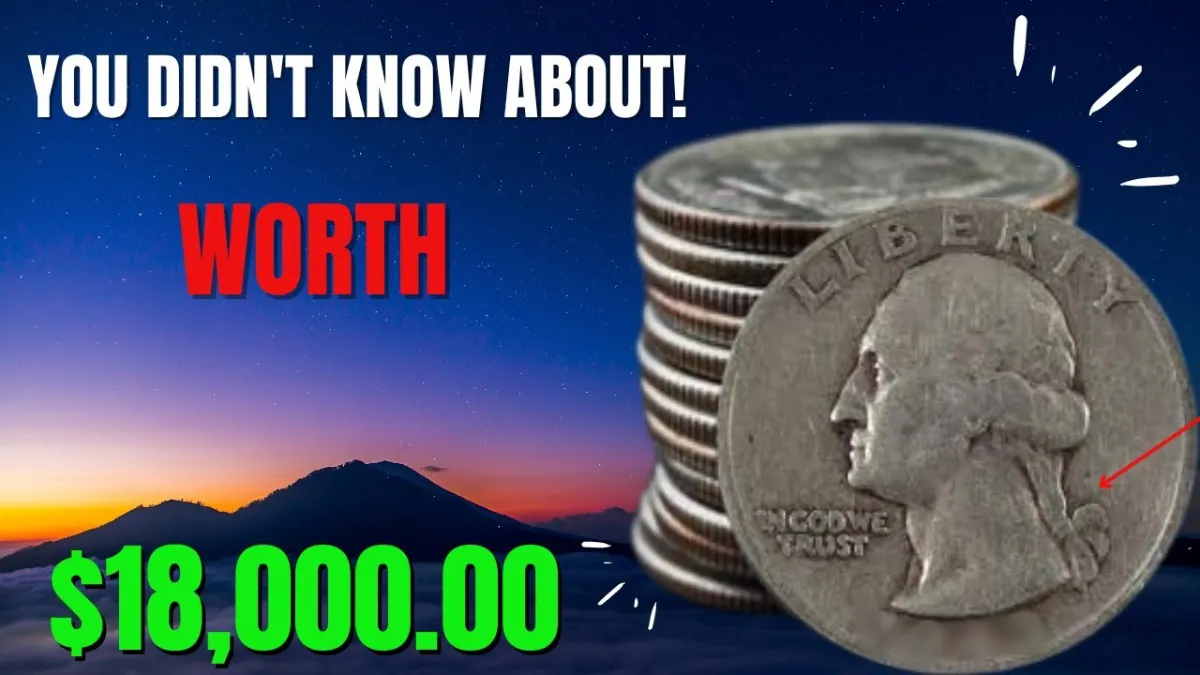At first glance, modern quarters from the late 20th century might seem like ordinary change—but some of them could be worth hundreds or even thousands of dollars to the right collector. Specifically, quarters from 1965, 1967, 1980, 1981, 1982, and 1983 have gained attention in the coin-collecting world for their rarity, errors, and unique historical context.
Let’s break down why these six years matter, what to look for, and how much your pocket change could actually be worth.
1. 1965 Quarter — Transitional Error Jackpot
The U.S. Mint stopped producing 90% silver quarters in 1964, shifting to a copper-nickel clad composition in 1965. However, a few 1965 quarters were accidentally struck on leftover 90% silver planchets.
What to Look For:
- A silver appearance (no copper edge)
- Weighs about 6.25 grams (vs. 5.67 grams for clad)
- Rings with a higher-pitched “silver” sound when dropped
Value:
- $7,000–$15,000+ for confirmed silver error coins
- Common 1965 clad quarters: 25¢–$2 in circulated condition
2. 1967 Quarter — Rare SMS and Mint Errors
Though not typically rare, some 1967 quarters have been found with unique mint errors or Special Mint Set (SMS) qualities—featuring sharp strikes and satin-like finishes.
What to Look For:
- Strong details and semi-prooflike finish
- Off-center strikes or double dies
- Full drum lines on reverse (Washington crossing the Delaware)
Value:
- Error coins or SMS examples: $50–$1,000+
- Circulated examples: 25¢–$1
3. 1980 Quarter — Mint Errors & High Grades
1980 marked the first year the “P” mint mark appeared on Philadelphia quarters. Quarters from this year aren’t rare in general—but those with errors or in MS-67 or higher condition are quite valuable.
What to Look For:
- Double die obverse (DDO) — look at the date or “LIBERTY”
- Off-center strikes
- Full strike with no wear in mint state
Value:
- High-grade examples: $100–$300+
- Rare error coins: $500–$1,000+
4. 1981 Quarter — Proof Errors & High Grades
Like 1980, most 1981 quarters are common—unless they’re found in exceptionally high condition or with rare errors. There’s also high demand for well-preserved examples from this period.
What to Look For:
- Mint state (MS-67+) with strong luster
- Proof coins with off-metal errors or missing clad layers
Value:
- MS-67+ examples: $200–$500
- Off-metal or double-strike errors: $1,000+
5. 1982 Quarter — No Mint Set, No Room for Mistakes
Due to a recession, the U.S. Mint did not produce Mint Sets in 1982 or 1983, making high-quality examples from circulation more desirable.
What to Look For:
- Full details and sharp edges
- Mint errors (clipped planchets, off-center strikes)
- “No Mint Mark” Philadelphia quarters
Value:
- MS-65 and above: $100–$300
- Unique errors: $500–$1,200
6. 1983 Quarter — Rare Because of No Mint Set
Like 1982, no uncirculated Mint Sets were issued in 1983. This means most coins from that year are well-worn, and finding a pristine example is extremely difficult.
What to Look For:
- MS-65+ quality from circulation
- Strong strike with minimal wear
- Mint errors or doubled dies
Value:
- High-grade 1983-P: $250–$500
- Error coins: $1,000+
Bonus Tip: Get Them Graded
If you suspect you have one of these valuable quarters, send it to a reputable grading service like PCGS or NGC. A professionally graded coin can significantly boost your coin’s selling price and credibility among collectors.
Final Thoughts
While most quarters from these years are only worth face value, a lucky few are worth hundreds or thousands of dollars thanks to their condition, rarity, or errors. So next time you’re checking your change, keep an eye out for these key dates—you might just find a hidden gem!

